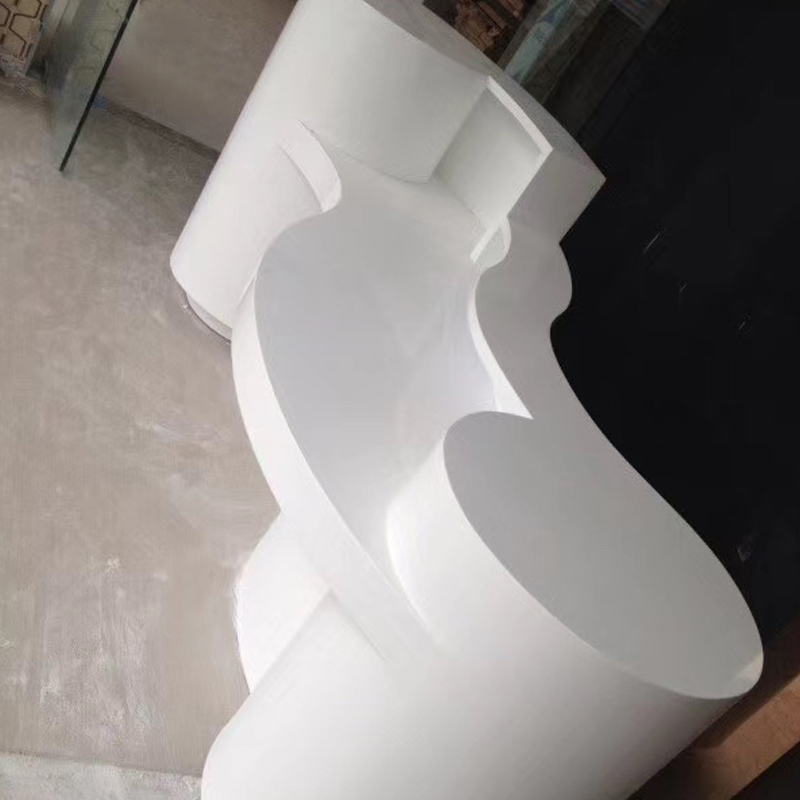
Artificial Marble tops, made from a blend of natural stone particles and resins, have become a popular choice for both residential and commercial surfaces. Known for their aesthetic appeal, affordability, and versatile design options, Artificial Marble Countertops and surfaces are durable and relatively easy to maintain. However, to keep them looking pristine over time and ensure their longevity, proper care and maintenance are essential. This guide will provide you with expert advice on how to extend the life of your artificial marble surfaces, including tips for cleaning, stain prevention, and overall upkeep.

Artificial marble is designed to be durable, offering a long-lasting surface that can withstand daily use. While it is not as hard as natural marble, it is still strong enough for most applications, including kitchen countertops, bathroom vanities, and tabletops. Key aspects of its durability include:
Scratch Resistance: Artificial marble is relatively scratch-resistant but can still be scratched by sharp objects or abrasive cleaners. Regular caution should be exercised to avoid contact with sharp knives or heavy utensils.
Impact Resistance: While artificial marble can endure mild impacts, it may crack or chip if heavy objects are dropped on it. The surface should be treated with care to avoid damage from impacts.
Heat Resistance: Artificial marble has some heat resistance but should not be exposed to hot pots or pans directly from the stove or oven, as extreme temperatures can cause discoloration or damage to the surface.
Stain Resistance: Compared to natural stone, artificial marble is less porous and resists stains from common kitchen substances like coffee, wine, or food spills. However, prolonged exposure to acidic substances like vinegar or citrus juice can cause discoloration or surface damage.
Keeping artificial marble surfaces clean is simple, but it requires a few guidelines to ensure the material remains in excellent condition. Here's how to clean your artificial marble tops effectively:
Daily Cleaning: For routine cleaning, use a mild dish soap and warm water solution. Apply the solution with a soft cloth or sponge to wipe down the surface. Avoid using harsh chemicals, as they can degrade the resin that binds the marble particles.
Avoid Abrasive Materials: Never use abrasive pads, steel wool, or scouring powders, as these can scratch the surface and diminish the marble’s glossy finish. Instead, opt for soft sponges or microfiber cloths to avoid damaging the surface.
Dealing with Tough Dirt: For tougher dirt, grime, or grease, a diluted mixture of vinegar and water (in small quantities) or a specialized stone cleaner can be used. Be sure to rinse the area with clean water afterward to avoid any residue buildup.
Drying: After cleaning, dry the surface with a soft cloth to prevent water spots and to maintain the surface’s shine.
Though artificial marble surfaces are stain-resistant, it’s essential to take precautions to prevent permanent stains and discoloration:
Wipe Spills Immediately: While artificial marble is resistant to most stains, spills should be cleaned promptly. Certain substances like wine, coffee, oils, or acidic foods (e.g., lemon juice, vinegar) can cause discoloration if left on the surface for long periods.
Use Cutting Boards: Avoid cutting or chopping food directly on your artificial marble surface. While the material is durable, it can scratch easily, and food acids can cause staining over time. Use cutting boards or trays for food preparation.
Coasters and Trivets: To prevent heat marks or discoloration, always place hot pots, pans, and cups on trivets or coasters. Avoid placing hot objects directly on the marble surface, as extreme temperatures can cause damage to the resin.
Although artificial marble surfaces are relatively durable, they can still suffer from scratches if not properly cared for. Follow these tips to minimize the risk of scratches:
Avoid Hard or Sharp Objects: Always use cutting boards and be cautious with knives, scissors, or any sharp tools. The material is scratch-resistant, but cutting directly on it can leave marks.
Clean Gently: When cleaning, avoid using rough scrubbing tools or abrasive cleaning agents. Instead, stick to soft cloths and sponges to prevent surface damage.
Use Soft Pads Under Heavy Objects: To prevent accidental scratches, place soft pads under heavy appliances or equipment that may be moved across the surface.
Over time, artificial marble surfaces may lose their shine, especially in high-traffic areas. Fortunately, restoring the glossy finish is a straightforward process:
Polishing: Use a special stone polish designed for artificial marble to restore its luster. Apply the polish to a clean, dry surface and buff gently using a soft cloth in a circular motion.
Avoid Over-Polishing: While polishing can enhance the surface, over-polishing can lead to an unnatural shine or buildup of polish residue. Be sure to follow the product instructions carefully.
In some cases, stubborn stains may require more intensive treatment. Here’s how to handle common stains:
Oil or Grease Stains: Use a baking soda paste (mix baking soda with a small amount of water) to treat oil or grease stains. Apply the paste to the stained area and let it sit for 10–15 minutes before wiping it away.
Coffee or Wine Stains: For coffee or wine stains, a diluted solution of hydrogen peroxide and water can work effectively. Test this solution on an inconspicuous area first to ensure it doesn’t cause any damage.
Acidic Stains: If acidic substances like vinegar or citrus have left marks on the surface, use a mild dish detergent solution and a soft cloth to gently scrub the area, then dry it with a clean cloth.
Unlike natural marble, artificial marble does not require sealing, as it is made with resins that make it less porous. However, some manufacturers may recommend sealing specific varieties of artificial marble for additional protection against stains or moisture. Always consult the manufacturer's guidelines to determine whether sealing is necessary for your particular surface.
Resealing Joints: If your artificial marble surface has been joined with adhesive, periodically check for gaps or cracks in the joints. Resealing the joints will prevent moisture from seeping in and causing damage.
Surface Touch-ups: Small scratches or chips can often be repaired using a polishing compound or a resin repair kit. For significant damage, professional restoration might be required.
Artificial marble tops are an excellent investment due to their durability, aesthetic appeal, and ease of maintenance. By following these simple care and maintenance guidelines, you can keep your artificial marble surfaces looking pristine for years to come. With regular cleaning, prompt stain removal, and proper preventive measures, you can enjoy the long-lasting beauty and functionality of your Artificial Marble Countertops, vanities, or tabletops without worry.